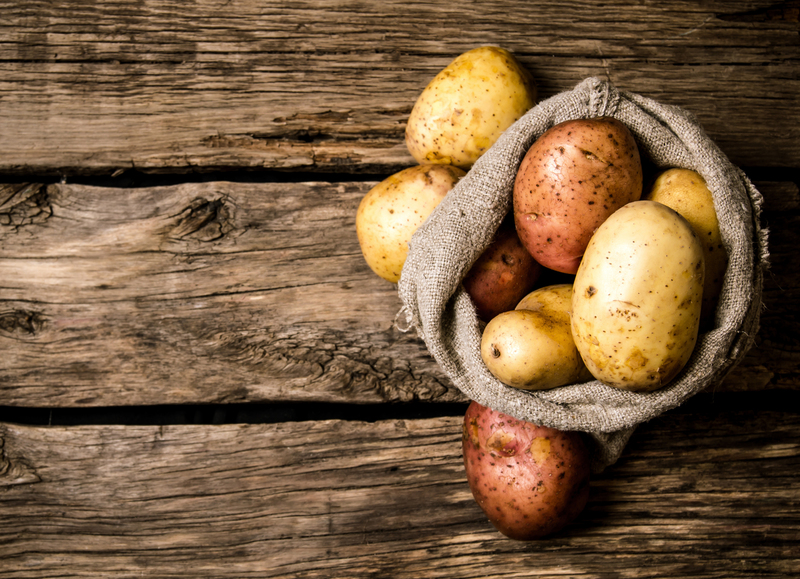Building an Adventure Garden for Children
Posted on 21/08/2025
Building an Adventure Garden for Children: The Ultimate Guide to Outdoor Play Spaces
Children thrive in environments where their imagination can soar, their bodies can move, and their senses can be fully engaged. An adventure garden is the perfect solution for creating such a magical space at home or within community settings. This comprehensive guide explores the many aspects of creating an adventurous outdoor play garden for kids, including design, safety, fun features, and inspiring activities. Read on to discover the benefits, must-have elements, and essential steps for building an adventure garden for children that fuels exploration, creativity, and hours of joyful play!
Why Create an Adventure Garden for Kids?
Adventure gardens provide far more than a beautiful landscape. These dynamic, interactive play areas offer countless benefits to children's physical, cognitive, and emotional development. Here's why you should consider establishing an adventure garden for young explorers:
- Encourages Imagination: Themed spaces and natural elements spark creative roleplay and storytelling.
- Promotes Physical Activity: Climbing, running, balancing, and jumping support healthy bodies.
- Connects with Nature: Adventure gardens immerse children in natural settings and seasonal changes.
- Boosts Problem-Solving: Navigating obstacles and puzzles hones critical thinking.
- Offers Sensory Experiences: Textures, scents, and sounds enrich sensory exploration.
- Fosters Independence: Children gain confidence through supervised risk-taking and self-directed play.
- Enhances Social Skills: Group play in adventure gardens teaches cooperation and communication.
Adventure play gardens for children create an inviting, ever-changing environment that grows alongside your child. Whether you have a tiny backyard or acres of open land, you can design a customized adventure garden to fit your unique needs and vision.

Planning Your Adventure Play Garden
Before jumping into construction, careful planning ensures your children's adventure garden is both safe and engaging. Follow these essential steps to lay the groundwork for an extraordinary outdoor play space:
1. Assess Your Space
Walk through your yard or chosen area. Consider:
- Size and shape of the available space
- Sun exposure and shade
- Natural features like trees, slopes, or rocks
- Visibility from indoors or gathering spaces
- Nearby hazards (roads, water, thorns, etc.)
2. Involve the Children
Children love to participate in the planning process--after all, this is their special place! Ask them:
- What games do you like to play outside?
- What are your favorite colors, themes, or stories?
- Do you want a secret hideout, a fairy garden, or a pirate ship?
Involving kids in the design of their adventure garden makes the space even more meaningful--and boosts their excitement!
3. Prioritize Safety
Ensure your garden plan keeps safety at the forefront by:
- Using non-toxic, child-friendly materials
- Providing soft landings with mulch, wood chips, or grass
- Securing and anchoring any play structures
- Eliminating poisonous plants or sharp edges
- Installing secure fencing if needed
- Supervising children, especially if water features are included
4. Choose a Theme or Adventure Style
Selecting a theme helps unify your kids' adventure garden. Popular ideas include:
- Jungle Explorer
- Pirate Cove
- Fairy Tale Enchanted Forest
- Bug's Life Garden
- Castle & Kingdom
- Space Odyssey
Or, blend different styles to create a unique adventure landscape tailored to your child's whims!
Must-Have Elements for Children's Adventure Gardens
What features transform an ordinary backyard into a wonderland of excitement?
Here are the building blocks of an outstanding adventure play garden for children:
- Natural Play Features – Boulders, logs, tree stumps, and fallen branches provide endless climbing, balancing, and building opportunities.
- Secret Hideouts – Tents, dens, willow tunnels, or leafy teepees become safe retreats for secret club meetings.
- Pathways and Trails – Winding stepping-stone paths, woodchip trails, or labyrinths encourage exploration and racing.
- Climbing Structures – Rope ladders, forts, climbing nets, or small rock walls challenge growing muscles.
- Water and Sand Play – Streams, pumps, splash pads, and sandpits delight the senses with tactile, messy play.
- Garden Beds – Kid-friendly planting areas introduce children to the magic of growing flowers, herbs, and vegetables.
- Loose Parts – Baskets of pinecones, stones, sticks, and shells inspire open-ended construction and creativity.
- Sound and Texture Zones – Wind chimes, musical instruments, gravel, and soft moss offer auditory and tactile discovery.
- Outdoor Art Spaces – Chalkboard walls, easels, or nature-mandala tables support artistic expression.
The most engaging adventure gardens for children combine wild, natural elements with creative man-made features. Design zones for quiet contemplation as well as active play to support every mood and temperament.
Step-by-Step: How to Build a Backyard Adventure Garden for Kids
Creating an exciting outdoor play garden for children doesn't have to be expensive or complicated. Follow these steps to build a fun, safe, and sustainable adventure garden for your kids at home:
1. Clean and Clear the Area
Begin by removing debris, weeds, and anything unsafe from your future adventure zone. If you have mature trees, consider keeping them for natural shade and climbing opportunities.
2. Mark Zones & Paths
- Use string or chalk to outline circular, square, or meandering zones for each activity.
- Map out main paths that link the features of your adventure play garden.
3. Lay Soft, Safe Ground Cover
- Spread mulch, bark chips, or soft grass on active play areas to cushion falls.
- Install edging (logs or stones) to contain loose materials like sand or gravel.
4. Build Play Structures & Features
- Dens & Hideouts: Use willow arches, tents, or recycled pallets and sheets to form shelters.
- Climbing Elements: Secure tree stumps, build a small wooden climbing wall, or hang rope ladders from a sturdy branch.
- Water Play: Sink a shallow tub in the ground for a pond, install a simple hand pump, or create a dry creek using stones.
- Sand Play: Frame out a sandbox with timber, and fill with clean play sand.
5. Plant, Decorate and Personalize
- Choose hardy, non-toxic plants such as sunflowers, strawberries, or sensory herbs (mint, lavender).
- Hang colorful windsocks, fairy lights, or homemade signs to personalize each area.
- Add seats from logs, stumps, or repurposed furniture so adults can relax and supervise play.
6. Offer Open-Ended Materials
- Provide buckets, spades, watering cans, magnifying glasses, bug viewers, and art supplies.
- Keep a stash of loose parts like pinecones, shells, fabric, and wooden blocks for inventing games and structures.
Top Tips for a Safe and Sustainable Adventure Play Area
Safety and sustainability are critical when designing any space where children play:
- Check all structures regularly for signs of wear, rot, or loose parts.
- Avoid treated timber where possible; opt for FSC-certified, untreated wood and eco-friendly paints.
- Regularly sweep paths for tripping hazards.
- Choose native plants that attract pollinators and are resistant to local pests.
- Install rain barrels and composters to make your garden green and educational.
- Supervise young children, especially near water or elevated play structures.
- Get kids involved in maintenance, planting, and decorating--they'll feel pride and learn valuable skills.
Popular Activities to Try in Your Kids' Adventure Garden
Looking for fresh ways to use your new adventure garden play space for children? Here are a few delightful activities to inspire hours of outdoor fun:
- Nature Scavenger Hunts: Create themed lists--find a smooth rock, a blue flower, a feather, something that smells nice, and more.
- Build Fairy or Bug Houses: Use natural materials to craft shelters for garden visitors.
- Mini-Garden Projects: Grow a "pizza garden" with tomatoes, basil, and peppers or a sunflower teepee fort.
- Obstacle Courses: Set up balance beams, tunnel crawls, and stump hops for friendly competition.
- Outdoor Art: Paint rocks, make leaf rubbings, or create mandalas from petals and seeds.
- Nighttime Adventures: Use lanterns for evening bug hunts or storytelling under the stars.

Frequently Asked Questions about Building Adventure Gardens for Kids
How much space do you need for a backyard adventure garden?
You can build a fun adventure garden for children in nearly any space size! Even compact yards can accommodate features like sand and water play, plant beds, and small trails. The key is to maximize variety and zones based on your available area.
Is it expensive to create an adventure play garden for children?
Adventure gardens don't have to break the bank. Repurpose natural materials such as logs, branches, rocks, and recycled items. Focus on open-ended play zones rather than expensive equipment.
What if I don't have time to build everything at once?
Your children's adventure garden can evolve over time. Start with a few basic features and add new elements each season.
How do I ensure the garden is safe?
Prioritize non-toxic materials, soft landings, sturdy construction, and ongoing adult supervision. Remove any poisonous plants and maintain fencing where needed.
Conclusion: Grow, Play, and Learn Outdoors!
Building an adventure garden for children is a rewarding project that offers endless play and learning opportunities. By blending nature, creativity, and thoughtful design, you'll give your kids a priceless gift: a backyard space where they can explore, imagine, laugh, and grow. Start simple, involve your children in the process, and watch as your family's own adventure garden blossoms into a beloved hub of outdoor fun and discovery.
If you're ready to transform your landscape into an outdoor adventure play garden for kids, use the tips in this guide to create a magical environment where childhood memories are made every single day!

